
Kód: 01975621
How to Think about Meaning
Autor Paul Saka
According to the dominant theory of meaning, truth-conditional semantics, to explain the meaning of a statement is to specify the conditions necessary and sufficient for its truth. Classical truth-conditional semantics is coming u ... celý popis
- Jazyk:
 Angličtina
Angličtina - Väzba: Brožovaná
- Počet strán: 285
Nakladateľ: Springer, 2010
- Viac informácií o knihe

214.12 €

Skladom u dodávateľa v malom množstve
Odosielame za 12 - 17 dní
Potrebujete viac kusov?Ak máte záujem o viac kusov, preverte, prosím, najprv dostupnosť titulu na našej zákazníckej podpore.
Pridať medzi želanie
Mohlo by sa vám tiež páčiť
-

Energy Conserve in Industry - Combustion, Heat Recovery and Rankine Cycle Machines
214.12 € -
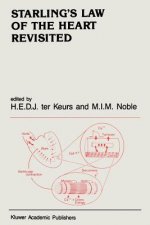
Starling's Law of The Heart Revisited
70.68 € -

Traction
19.40 € -3 % -

Warriors: The Broken Code #2: The Silent Thaw
9.08 € -21 % -

English-Spanish First Little Readers: Guided Reading Level B (Parent Pack): 25 Bilingual Books That Are Just the Right Level for Beginning Readers
20.42 € -19 % -

150 Best Tiny Space Ideas
21.95 € -23 % -

Scholarship Search Tools First Edition
12.76 € -

Botanical Drawing
14.39 € -23 % -

Some Kind of Happiness
8.26 € -21 % -

Grids & Guides (Gray) Notebook
15.93 € -10 % -

ISA Does It
27.57 € -17 % -

Listeners' Guide to Medieval English
177.54 € -

Institutions of Economic Growth
65.17 € -

From Adjustment To Development In Africa
70.68 € -
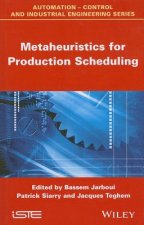
Metaheuristics for Production Scheduling
275.21 € -

Vincent
16.85 € -21 % -

Expanding Role of Folates and Fluoropyrimidines in Cancer Chemotherapy
70.68 € -

Anesthesia Equipment Simplified
125.75 € -

Potega terazniejszosci
8.37 € -15 % -

Fokus Deutsch C1 - Erfolgreich in Alltag und Beruf - Allgemeine Ausgabe
21.14 € -

Total vernetzt
76.92 €
Darčekový poukaz: Radosť zaručená
- Darujte poukaz v ľubovoľnej hodnote, a my sa postaráme o zvyšok.
- Poukaz sa vzťahuje na všetky produkty v našej ponuke.
- Elektronický poukaz si vytlačíte z e-mailu a môžete ho ihneď darovať.
- Platnosť poukazu je 12 mesiacov od dátumu vystavenia.
Viac informácií o knihe How to Think about Meaning
Nákupom získate 530 bodov
 Anotácia knihy
Anotácia knihy
According to the dominant theory of meaning, truth-conditional semantics, to explain the meaning of a statement is to specify the conditions necessary and sufficient for its truth. Classical truth-conditional semantics is coming under increasing attack, however, from contextualists and inferentialists, who agree that meaning is located in the mind.§How to Think about Meaning develops an even more radical mentalist semantics, which it does by shifting the object of semantic inquiry. Whereas for classical semantics the object of analysis is an abstract sentence or utterance such as "Grass is green," for attitudinal semantics the object of inquiry is a propositional attitude such as "Speaker so-and-so thinks grass is green." Explicit relativization to some speaker S allows for semantic theory then to make contact with psychology, sociology, historical linguistics, and other empirical disciplines.The attitudinal approach is motivated both by theoretical considerations and by its practical success in dealing with recalcitrant phenomena in the theory of meaning. These include: presuppositions as found in hate speech, and more generally the connotative force of evaluative language; the problem of how to represent ambiguity; quotation and the use-mention distinction; and the liar paradox, which appears to contradict truth-based semantics.§"Technically exact, highly readable, and illustrated with valuable examples, ...here is a book to counterbalance decades of misdirected anti-psychologistic semantic dogma." Prof. Dale Jacquette, Pennsylvania State University, U.S.A.According to truth-conditional semantics, to explain the meaning of a statement is to specify the conditions necessary and sufficient for its truth. This book develops a more radical mentalist semantics by shifting the object of semantic inquiry. Classical semantics analyzes an abstract sentence or utterance such as "Grass is green"; in attitudinal semantics the object of inquiry is a propositional attitude such as "Speaker so-and-so thinks grass is green".According to the dominant theory of meaning, truth-conditional semantics, to explain the meaning of a statement is to specify the conditions necessary and sufficient for its truth. Classical truth-conditional semantics is coming under increasing attack, however, from contextualists and inferentialists, who agree that meaning is located in the mind.§How to Think about Meaning develops an even more radical mentalist semantics, which it does by shifting the object of semantic inquiry. Whereas for classical semantics the object of analysis is an abstract sentence or utterance such as Grass is green , for attitudinal semantics the object of inquiry is a propositional attitude such as Speaker so-and-so thinks grass is green . Explicit relativization to some speaker S allows for semantic theory then to make contact with psychology, sociology, historical linguistics, and other empirical disciplines.§The attitudinal approach is motivated both by theoretical considerations and by its practical success in dealing with recalcitrant phenomena in the theory of meaning. These include: presuppositions as found in hate speech, and more generally the connotative force of evaluative language; the problem of how to represent ambiguity; quotation and the use-mention distinction; and the liar paradox, which appears to contradict truth-based semantics.
 Parametre knihy
Parametre knihy
Zaradenie knihy Knihy po anglicky Language linguistics Semantics, discourse analysis, etc
214.12 €
- Celý názov: How to Think about Meaning
- Autor: Paul Saka
- Jazyk:
 Angličtina
Angličtina - Väzba: Brožovaná
- Počet strán: 285
- EAN: 9789048174607
- ISBN: 9048174600
- ID: 01975621
- Nakladateľ: Springer
- Hmotnosť: 462 g
- Rozmery: 235 × 155 × 17 mm
- Dátum vydania: 22. November 2010
Obľúbené z iného súdka
-

How to Read a Poem
16.44 € -18 % -
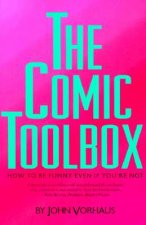
Comic Toolbox
13.58 € -16 % -

Winning Arguments
20.12 € -6 % -
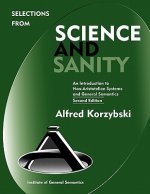
Selections from Science and Sanity
14.29 € -17 % -

Lover's Discourse
11.13 € -23 % -

Language and Symbolic Power
25.02 € -3 % -

Language and Power
67.93 € -

Winning Arguments
16.44 € -5 % -

Language
14.39 € -

Whose Space is it Anyway?
68.85 € -

Mythologies
11.13 € -23 % -
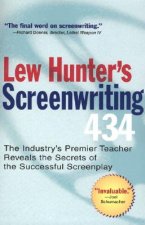
Lew Hunter's Screenwriting 434
25.84 € -

Introducing Semiotics
10.10 € -22 % -

After Babel
29.62 € -

Critical Discourse Analysis
78.75 € -

Rhetoric: A Very Short Introduction
10.10 € -22 % -
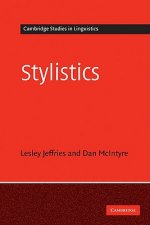
Stylistics
54.13 € -

Emotion Talk Across Corpora
139.23 € -

Three Steps on the Ladder of Writing
27.68 € -11 % -
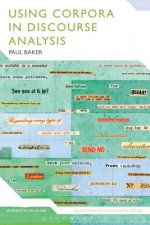
Using Corpora in Discourse Analysis
73.55 € -

Six Walks in the Fictional Woods
35.75 € -

Word and Object (Studies in Communication)
22.87 € -
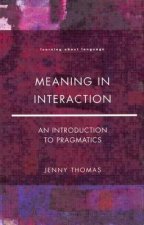
Meaning in Interaction
73.24 € -

Discourse Theory and Political Analysis
35.95 € -

New Rhetoric, The
44.43 € -
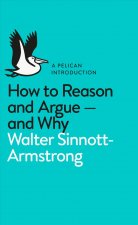
Think Again
12.25 € -23 % -
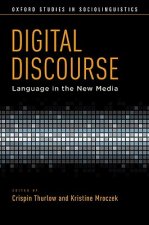
Digital Discourse
80.90 € -
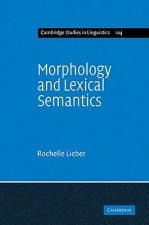
Morphology and Lexical Semantics
46.47 € -
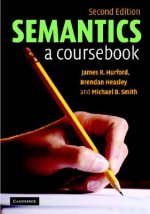
Semantics
43.31 € -

How to do Discourse Analysis
56.69 € -

Functional Discourse Grammar for English
67.72 € -

Idioms and Collocations
302.59 € -

Meaning in Language
62.51 € -

Discourse Reader
109.61 € -

Handbook of Discourse Analysis 2e
84.68 € -

Language in Thought and Action
16.13 € -21 % -
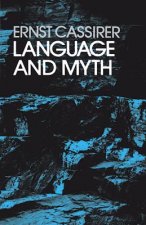
Language and Myth
8.37 € -19 % -
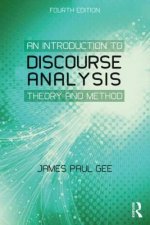
Introduction to Discourse Analysis
63.74 € -

Role of the Reader
30.94 € -

Discourse Analysis as Theory and Method
111.24 € -

Immediate Fiction
23.28 € -3 % -

How to Analyse Texts
57.51 € -

Political Metaphor Analysis
66.09 € -

Collocation
70.68 € -

How to Do Critical Discourse Analysis
84.17 € -

Sign of Three
30.94 € -
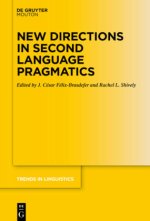
New Directions in Second Language Pragmatics
24.20 € -4 % -

Generative Lexicon
56.59 € -
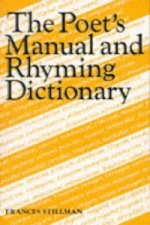
Poet's Manual and Rhyming Dictionary
15.72 €
Osobný odber Bratislava a 2642 dalších
Copyright ©2008-24 najlacnejsie-knihy.sk Všetky práva vyhradenéSúkromieCookies


 21 miliónov titulov
21 miliónov titulov Vrátenie do mesiaca
Vrátenie do mesiaca 02/210 210 99 (8-15.30h)
02/210 210 99 (8-15.30h)